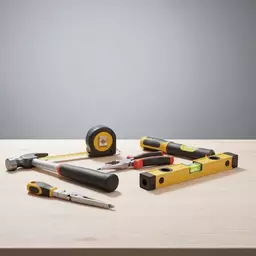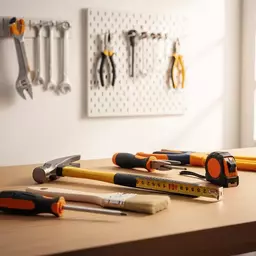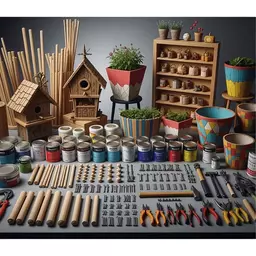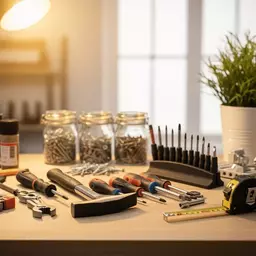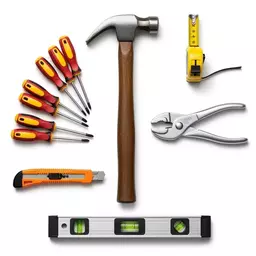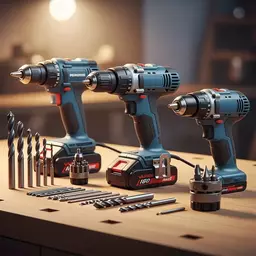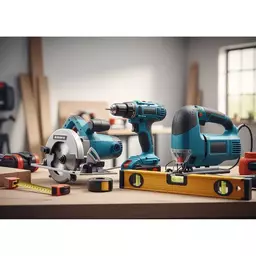DIY Ideas for Small Spaces

Living in a small space can be both daunting and liberating. Did you know that with the right approach, you can transform your compact living area into a stylish and functional oasis? Here are some key insights to help you navigate the challenges of small space living effectively.
What You Will Learn
- Effective strategies to maximize functionality in small living areas, including the use of multi-purpose furniture.
- Common challenges of small spaces, such as limited storage and layout constraints, and how to overcome them.
- Creative DIY project ideas tailored for small spaces, focusing on budget-friendly and practical solutions.
- The advantages of adopting a minimalist design approach to enhance the ambiance of your home.
- How to use color schemes strategically to create an illusion of space and coherence in your decor.
- Innovative storage solutions, including custom furniture and organization hacks, to keep your space neat and stylish.
Common Challenges and Solutions for Small Spaces
Understanding the key issues faced in small living areas can help implement effective solutions. Below are some common challenges and corresponding solutions to enhance small space living.
Limited Storage
Use vertical space with wall-mounted shelves and storage bins to keep floors clear and organized.
Layout Constraints
Arranging furniture wisely can improve functionality; consider multi-purpose and modular pieces.
Feeling Cramped
Adopt a minimalist design to reduce clutter and promote a serene environment.
Overcrowded Surfaces
Use stylish baskets and organizers to keep surfaces tidy and visually appealing.
Creative Space-Saving Solutions for Small Areas
Living in a small space can be both a challenge and an opportunity for creativity! As a DIY enthusiast, I’ve found that small areas require clever solutions that maximize every inch while still feeling warm and inviting. Whether you're in a cozy apartment or a tiny house, embracing innovative design can transform your living experience.
One of the biggest hurdles in compact living is making sure you have enough functionality in your space. This involves not only choosing the right furniture but also cleverly organizing your belongings. Trust me, a well-planned layout can make your small space feel much larger!
Understanding the Challenges of Small Spaces
Small spaces come with their fair share of challenges. For instance, limited square footage can lead to clutter and a lack of storage. But don't worry; with some smart planning, you can tackle these issues head-on!
Here are some common challenges you might face when dealing with small areas:
- Limited Storage: Finding places to store your essentials without sacrificing style can be tricky.
- Layout Constraints: Arranging furniture in a way that promotes both functionality and flow is key.
- Feeling Cramped: Small spaces can sometimes feel stifling, especially if they’re cluttered.
Maximizing Functionality in Compact Living
To truly maximize functionality, think creatively about how you use your space. For example, multi-purpose furniture, like a sofa that converts to a bed or a coffee table that doubles as storage, is essential. These types of items can save valuable floorspace while also serving multiple needs!
Another tip is to utilize vertical space. By installing shelves or wall-mounted hooks, you can keep your floor clear and make your small area feel more open. Every little bit of space counts, and I always find it rewarding to see how effective these strategies can be!
Identifying Common Small Space Issues
Identifying the specific issues in your space is the first step toward a solution. You might find that your small kitchen feels cluttered, or your living room is lacking a cozy atmosphere. Understanding these needs allows you to implement targeted solutions.
Consider these common small space issues:
- Overcrowded Surfaces: Too many items on tables or countertops can make a space feel cramped.
- Limited Natural Light: Small rooms often struggle with adequate lighting, making them feel even smaller.
- Lack of Personal Touch: Small spaces can feel impersonal without thoughtful decor integration.
Overview of DIY Project Ideas for Small Spaces
Now that we've identified some challenges, let’s dive into some fantastic DIY projects that can help transform your small space! These ideas focus on practicality and ensuring you stay within budget, which is a priority for many DIY enthusiasts.
Here are a few DIY project ideas to get you started:
- Wall-Mounted Desks: Perfect for creating a workspace without taking up too much room.
- Floating Shelves: These are great for displaying books and decor while saving floor space.
- Storage Ottomans: Stylish and functional, they can serve as seating while hiding away clutter!
Emphasizing Practicality and Budget-Friendliness
When it comes to small space projects, practicality is key! You don’t need to break the bank to create a functional area. I always recommend checking out local hardware stores for affordable materials that can be upcycled or repurposed into something new.
For example, you could take an old dresser and turn it into a stylish TV stand, adding both storage and character to your living room at little cost. Getting creative with what you already have can lead to some wonderful discoveries!
Importance of Multi-Functional and Upcycled Projects
Multi-functional furniture is amazing in small spaces! It helps you maximize your functionality without overcrowding your area. Plus, upcycling furniture not only saves money but also adds a personalized touch to your home.
Here are some benefits of incorporating these projects into your small space:
- Cost-Effective: Upcycling often requires minimal investment, making it budget-friendly.
- Environmentally Friendly: Reusing materials is a great way to reduce waste.
- Unique Style: Upcycled pieces can provide character and charm that store-bought items often lack.
Incorporating Minimalist Design Principles
Minimalism is more than just a design choice; it’s a lifestyle that can greatly benefit small space living. By simplifying your decor, you can create a serene and uncluttered environment that feels spacious and welcoming.
As I’ve discovered through my own DIY projects, embracing a minimalist approach often results in a more harmonious space. You’ll find it easier to maintain a tidy home when every item has its place!
Benefits of Minimalism in Small Space Living
Adopting minimalism can radically change how you perceive your small area. It allows you to focus on quality instead of quantity, enhancing the overall ambiance of your space.
Benefits include:
- Less Clutter: A minimalist approach helps keep your space organized.
- Improved Aesthetics: Simple designs can create a more visually appealing environment.
- Increased Tranquility: A calm, uncluttered space can reduce stress and promote relaxation.
Creating a Cohesive Look with Color Schemes
Color plays a vital role in making a small space feel bigger. Cohesive color schemes can unify your decor and create a more expansive feel. I love using light, neutral colors to reflect light and make spaces feel airy!
Here are some color tips for small spaces:
- Use Light Colors: Light hues can make a room seem larger and more inviting.
- Accent with Bold Colors: Introduce a pop of color through accessories like cushions or artwork.
- Maintain Consistency: Stick to a limited color palette for a more harmonious feel.
Quick Summary
Here’s a brief recap of the key points discussed so far:
- Small spaces present unique challenges like limited storage and layout constraints.
- Creative solutions, such as multi-functional furniture and vertical storage, can maximize functionality.
- Embracing minimalism enhances the aesthetics and tranquility of small areas, making them feel more spacious.
- DIY projects, especially custom furniture, can provide personalized storage solutions while being budget-friendly.
Frequently Asked Questions About Small Space Living
- What are the most common challenges in small space living?
- The most common challenges include limited storage, layout constraints, feeling cramped, overcrowded surfaces, and sometimes a lack of natural light or personal touch.
- How can multi-purpose furniture help maximize small spaces?
- Multi-purpose furniture, such as sofa beds or coffee tables with storage, helps maximize space by serving multiple functions, reducing the need for additional furniture pieces and saving valuable floor space.
- What are some budget-friendly DIY projects for small spaces?
- Budget-friendly DIY projects include building wall-mounted desks, floating shelves, and storage ottomans. Upcycling old furniture also offers cost-effective and unique solutions.
- How does a minimalist design approach benefit small spaces?
- Minimalism helps reduce clutter, improves aesthetics, and increases tranquility by focusing on quality over quantity, making small spaces feel more organized, spacious, and welcoming.
- What role do color schemes play in making a small room feel larger?
- Using light, neutral colors can reflect light and make a room feel airier and more expansive. Consistent color palettes and strategic accents can unify decor and create a cohesive, larger-feeling space.
- Where can I find more DIY project ideas?
- You can find more DIY project ideas on resources like Instructables and The Home Depot's DIY projects and ideas for small spaces section.
Innovative Storage Solutions for Efficient Organization
When it comes to organizing small spaces, the right storage solutions can make all the difference! I have found that with a little creativity, you can turn even the tiniest area into a neatly organized haven. Let’s explore some innovative ideas that will help you maximize storage while keeping your space stylish and functional.
One of the best ways to tackle storage in compact areas is by creating custom furniture. Not only does it serve a practical purpose, but it also adds a personal touch to your home. By following DIY methods, you can design storage solutions that truly fit your needs and style, all while being budget-friendly!
Creating Custom Storage with DIY Furniture
Building your own furniture might sound intimidating, but it can be a rewarding project! Here are a few ideas to get you started:
- Building Wall Shelves: Use vertical space by adding wall shelves. They are perfect for displaying books, plants, or decorative items while keeping the floor clear.
- Designing Under-Bed Storage Units: Consider creating storage bins that slide under your bed. These can hold seasonal clothes or extra linens, making great use of an often-overlooked area!
- Exploring IKEA Hacks: IKEA offers affordable options, and with a bit of creativity, you can hack their furniture for unique storage solutions that fit your style.
Each of these ideas can be tailored to fit your specific space requirements, ensuring that no inch goes to waste. The beauty of DIY is that you can customize the size, design, and finish to seamlessly blend with your existing decor!
Smart Organization Hacks for Small Rooms
Sometimes, it’s the little things that can make a big impact! Implementing smart organization hacks can transform a cluttered room into an organized oasis. Here are some practical suggestions:
- Using Pegboards: They are versatile and perfect for storing tools or craft supplies. Mount one on the wall and arrange hooks to keep everything accessible and visible.
- Incorporating Baskets and Storage Bins: Use stylish baskets to keep items tidy. They can easily fit on shelves or under tables, adding both functionality and charm!
- Utilizing Modular Furniture: Look for pieces that can be easily rearranged. Modular furniture allows you to create different layouts, making your space adaptable to your needs.
These solutions not only save space but also enhance the overall look of your room. I always recommend considering how these elements can work together to create a cohesive and functional environment.
Recap of Key Points
Here is a quick recap of the important points discussed in the article:
- Embrace creative space-saving solutions to maximize functionality in small areas.
- Utilize multi-purpose furniture and vertical storage to keep your space organized and open.
- Identify common small space issues, such as limited storage and overcrowded surfaces, to implement targeted solutions.
- Incorporate DIY projects, like wall-mounted desks and floating shelves, to enhance both style and practicality.
- Adopt minimalist design principles to create an uncluttered and tranquil environment that feels more spacious.
- Use cohesive color schemes to unify decor and make small spaces feel larger and more inviting.
- Implement smart organization hacks, such as pegboards and modular furniture, to maintain an efficient and stylish living area.
